Chapter 9. Cold War Canada, 1945-1991
9.6 Dief is the Chief
From 1896 to 1957, the Liberal Party ran Canada, with only three intermissions. There was the decade from 1911 to 1920, when Robert Borden (1854-1937) and his Conservative/Union governments were in power. Arthur Meighen (1874-1960) was Prime Minister for three months in 1926. R.B. Bennett (1870-1947) held the job from 1930 to 1935. That’s only 15 years of Conservative government, as opposed to 46 years of Liberal administration. And most of that Liberal lock on power was on Mackenzie King’s watch. By the late 1950s, change was, arguably, overdue, as the leadership of the Liberal Party looked more and more like an aging dynasty, one that included the brusque and arrogant C.D. Howe. St. Laurent’s pro-Americanism grated in many quarters and there was a growing sense that big infrastructure projects helped contractors and their friends while the government’s commitment to social welfare more generally was tempered by a fiscal conservatism.
In 1957, the Conservatives under their new leader, John Diefenbaker (1895-1979), capitalized on Liberal weaknesses and a campaign that was noteworthy for embarrassing moments. Diefenbaker (aka: Dief) represented the left-wing of the conservative tradition in Canada — he was a Red Tory— and was committed to the ideal of the common good. His position on expanding the welfare state, for example, was more aggressive than St. Laurent’s, a fact that probably cost the Co-operative Commonwealth Federation (CCF) some votes and, indeed, seats. A populist speaker on the campaign trail, Diefenbaker had a near-legendary memory for faces and names; he was, as well, the first credible non-francophone, non–Anglo-Celtic leader. He was, like so many Westerners, from central European stock and was unencumbered by either the old Tory fetish for British royalism nor the reflexive North American continentalist response. He surprised the pundits by winning enough seats to form a minority government. In 1958, he went back to the polls and was returned with the biggest majority to date.
Two issues dominated the Diefenbaker years. One of these was civil and personal liberties. The other was relations with the United States. These would all overlap in ways that could only have happened in the Cold War.
Diefenbaker and the Rise of Rights
Before 1960, the rights that were enjoyed by some Canadians — and denied to others — were of two kinds. There were those established in British Common Law (some of which dated back to the Magna Carta) and those that could be found in various pieces of legislation such as the Persons Act or the Indian Act. There was no single statement of principles comparable to the American Bill of Rights. It is perhaps ironic that the Canadian prime minister most associated with mid-century nationalism produced a legislative statement that brought the Canadian culture of rights more into line with that of the United States. It was, however, a long-term project of Diefenbaker’s. Begun in the 1930s when he was a Prince Albert lawyer, it was probably nudged along by the introduction of the Saskatchewan Bill of Rights in 1947.
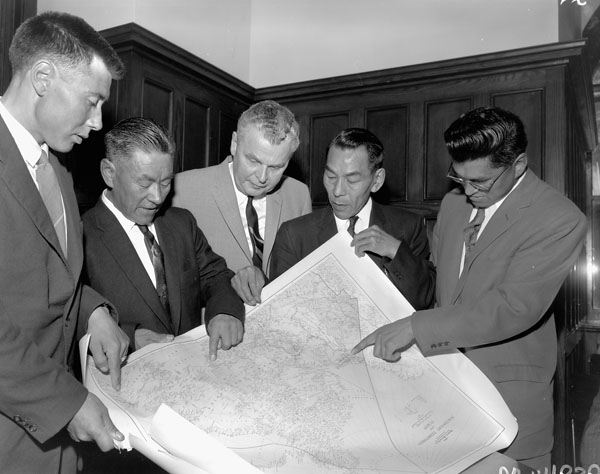
The Canadian Bill of Rights (1960) arose in part from an increased postwar interest in human rights. This was an ideal championed by the United Nations, made more pressing with the revelations of the Nuremberg Trials. It was also a bedrock issue in the West as regards Cold War rhetoric. That is, rights were associated with free democracies and not with communist or fascist regimes. In practice, the Canadian Bill of Rights was limited in its impact. Its range was limited to federal laws, it did not involve a constitutional change, and it neither called for nor engaged in the kind of housekeeping needed to eliminate contradictions in existing legislation. Nevertheless, it was a landmark in that it was a bold and concise statement of rights that extended to all members of Canadian society: to wit:
1. It is hereby recognized and declared that in Canada there have existed and shall continue to exist without discrimination by reason of race, national origin, colour, religion or sex, the following human rights and fundamental freedoms, namely,[1]
(a) the right of the individual to life, liberty, security of the person and enjoyment of property, and the right not to be deprived thereof except by due process of law;
(b) the right of the individual to equality before the law and the protection of the law;
(c) freedom of religion;
(d) freedom of speech;
(e) freedom of assembly and association; and
(f) freedom of the press,…
Diefenbaker’s commitment to a more inclusive vision of Canada manifested itself in other ways, too. He extended the franchise to Indigenous peoples and, in 1960, appointed Ellen Fairclough (1905-2005) to his Cabinet, making her the first woman to hold an executive position in the federal government, and he sent James Gladstone (aka: Akay-na-muka, 1887-1971) to the Senate — the first Indigenous person to hold such an appointment.
The Canadian Identity
From 1867 to 1958, the essential debate over the nature of Canadian nationhood was between those who yearned for unity in duality and those who sought a single (typically, anglophone) nationality. The Conservatives in the 1950s continued to suffer in Quebec from the legacy of Borden’s conscription policies — so much so that Diefenbaker did not bring a single Québecois MP into his Cabinet. This did nothing to repair the relationship between the Tories and Quebec. Moreover, Diefenbaker was adamantly opposed to dualism, which, given the history of the Conservatives, might not be terribly surprising. But there was a new twist: Diefenbaker objected to special concessions to Quebec and to francophones, not because he would rather they were anglophones or because doing so would subtract from the rights of anglophones, but because the binary logic of dualism impaired the citizenship of Canadians drawn from other ethnic/national groups and did nothing at all for Indigenous peoples. For Diefenbaker, legislation such as the Bill of Rights created guarantees for all Canadians rather than concessions based on ancestry or culture. This was the essence of his One Canada policy that was dismissed by many Canadians, although it contained the germ of what would become known as multiculturalism a decade later.
Diefenbaker and World Affairs
Although Pearson is the prime minister most often associated with diplomatic ability, Diefenbaker did much to reorient Canada internationally. He was perpetually suspicious of American influences and sought to improve Canadian trade with Britain and raise Canada’s profile in the Commonwealth. When white voters in South Africa decided by referendum in 1960 to become a republic (one in which black and Asian citizens would have far fewer rights), the Commonwealth was asked to permit South Africa to continue as a member. Diefenbaker went on record as hostile to apartheid and was able to persuade the Commonwealth countries (other than Britain and New Zealand) that racial equality was a principle of the association. South Africa was thus obliged to withdraw from the Commonwealth.
During the Suez Crisis of 1956, Diefenbaker chided Pearson and St. Laurent for getting too close to the Americans. The White House took note and, observing Diefenbaker’s pro-Commonwealth orientation, expected that he would be a difficult prime minister. But, in 1958, he carried forward the Liberal government’s commitment to the North American Aerospace Defense Command (NORAD) agreement with the United States. NORAD effectively made Canada part of the American frontline of defense against a Soviet missile attack and it was responsible for administering the Pinetree, Mid-Canada, and DEW Lines. It was under Diefenbaker, as well, that the promising Avro Arrow program was scrapped. The CF-100 Canuck was, in the early 1950s, the first of Avro Canada’s innovations in jet-powered aircraft, and it was followed by a much more sophisticated, delta-wing jet called the Avro Arrow. The first operational unit was unveiled on 4 October 1957. The date matters because of the coincidental launch that day of the first space satellite, the Russian Sputnik. What might have served as a cutting-edge bomber interceptor had, in a stroke, been rendered inadequate by the possibility of long-range, rocket-launched attacks.
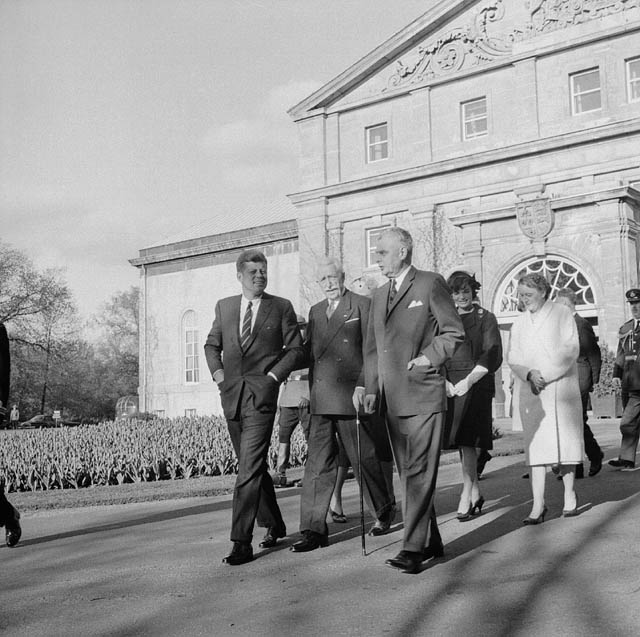
Rising costs, slumping demand from the Royal Canadian Airforce (RAF), an abject failure to sell units to the Americans or elsewhere internationally, and a growing sense that the Arrow would fare badly in an ICBM world, cast the Arrow project in a dim light. The new Bomarc anti-aircraft missile promised to perform better and, presented with an either-or choice, Diefenbaker opted in 1959 to go with the missiles. Two American-built, Canadian-managed Bomarc launch sites were constructed in Canada, but the question remained as to whether the missiles would be nuclear-tipped. Diefenbaker and his cabinet procrastinated before deciding against the nuclear-tipped option, as the 1962 election campaign drew closer. Although Diefenbaker had got on well enough with American President Dwight Eisenhower (1890-1969), there was little other than mutual loathing between the Canadian prime minister and President John F. Kennedy. (Kennedy regarded Diefenbaker as a “boring son of a bitch” and seemed determined to mispronounce the Prime Minister’s surname. Diefenbaker said, likewise, of JFK, “He’s a fool — too young, too brash, too inexperienced, and a boastful son of a bitch!”) Pressed by Kennedy to join the Organization of American States (OAS) — a hemispheric alliance that critics regarded as an American-run Cold War club — Diefenbaker pushed back, rejected the OAS and the nuclear warheads for Bomarc.
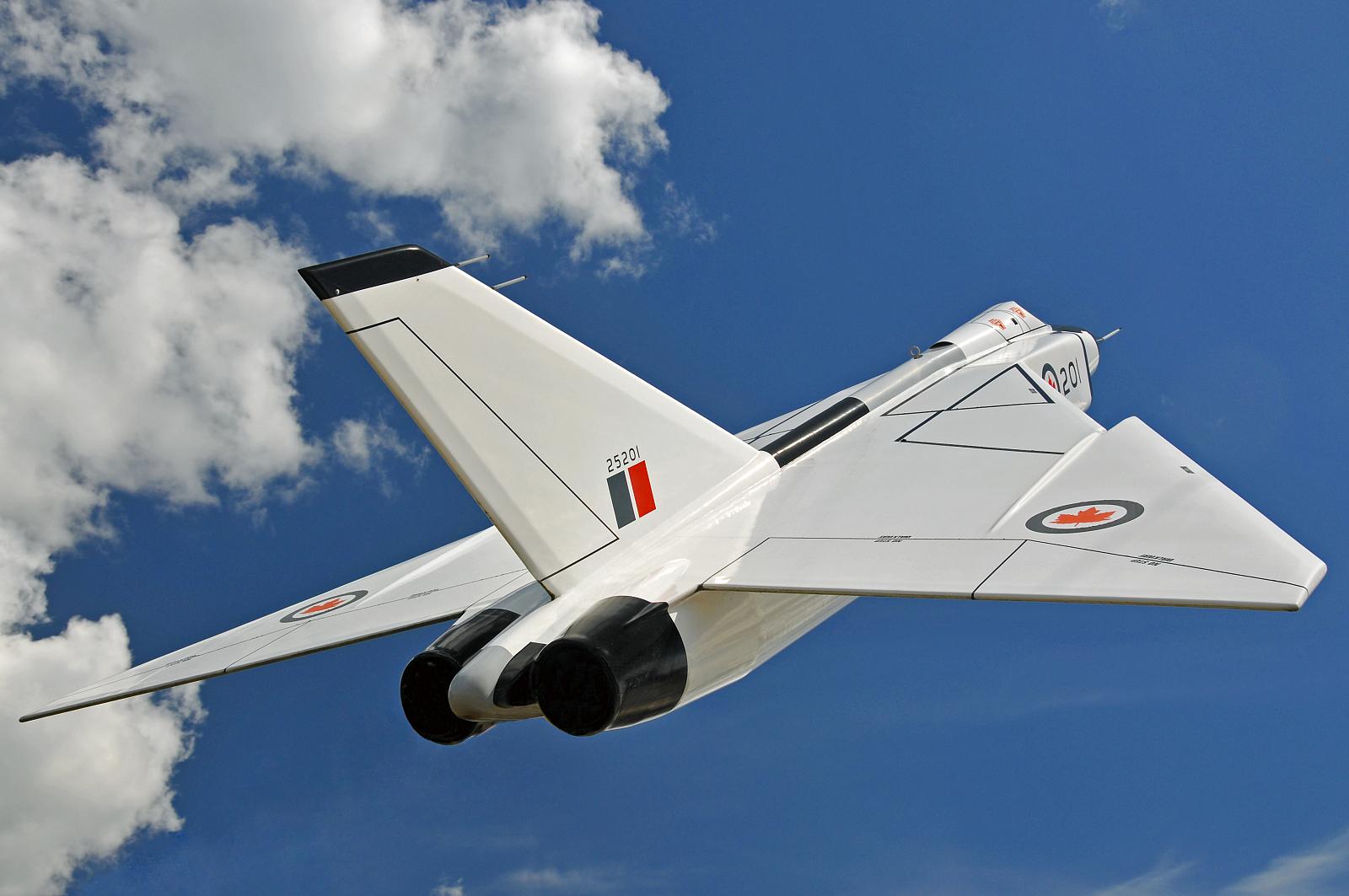
The decision to cut Ottawa’s losses on the Avro Arrow (the few prototypes were subsequently cut up into scrap) cost Avro thousands of jobs. This was politically bad enough but when coupled with the Bomarc dithering and the poor contrast between America’s dashing new President and the far less photogenic Diefenbaker it was political poison. To make matters worse, a deflating dollar — it fell to 92.5 cents against the American dollar — brought taunts of Diefendollars and hurt the Tories’ chances of reelection. In 1962, the Tories were reduced to a minority and then, in 1963, the Liberals snuck in with a minority of their own.
Beyond the Arrow
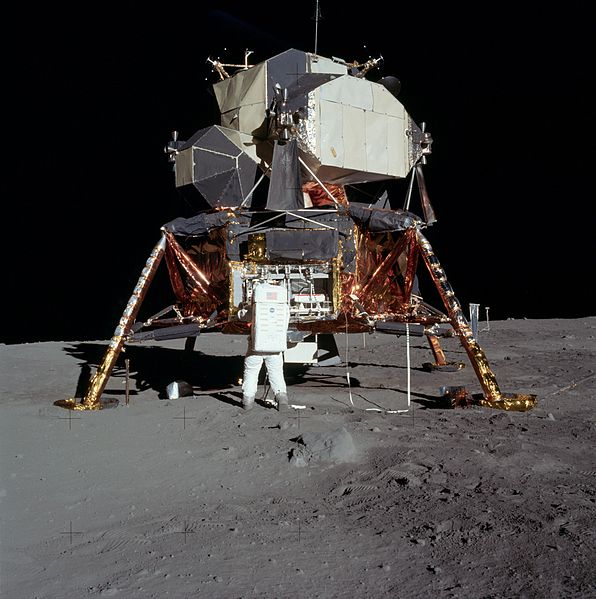
For the most part, Canadian technological achievements in the 1950s and 1960s were eclipsed by American and Soviet advances. Nevertheless, they are very much worth noting.
The Canadian automobile industry perpetually suffered against American imports and the dominance of American design and parts. This would change somewhat with the Auto Pact (discussed in Section 8.14), though not a great deal. Where Canadians did much better was, perhaps not surprisingly, in areas that reflected the country’s particular environmental challenges.
In the 1930s, a Valcourt mechanic, Joseph-Armand Bombardier (1907-1964), began work on a bus that could run on snow. In 1937, he produced the first snowmobile, or auto-neige, a large multi-terrain vehicle for use on Quebec’s winter roads. When snowplough technology improved during the war, Bombardier quickly refocused on military equipment and then on smaller versions of the snowmobile. The Ski-Dog was intended for individuals and communities in the north where dog-teams were still widely used in winter. An error in printing resulted in the 1959 Ski-Doo and the explosion of a recreational market. By 1969, the late founder’s sons had taken over the firm and incorporated it as Bombardier Limited. Over the next 20 years, the company would move aggressively into air transport, rail technology, and rapid transit. Vancouver’s SkyTrain system (which opened in 1986), for example, relies heavily on Bombardier rolling stock and technology. It was as a defence contractor that Bombardier first experienced significant success and it is in that area that much Canadian technological innovation has occurred, especially in aeronautics.
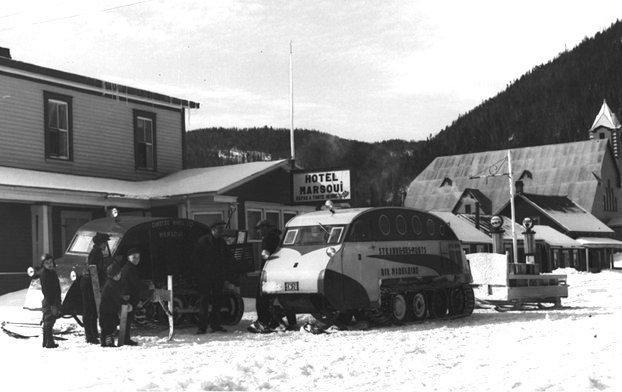
Canada’s involvement in the space race begins in earnest with the launching of the Alouette I satellite in 1962, which made Canada only the fourth country in space. The size and shape of the country means that Canada was bound to take an early interest in advances in telecommunications technologies. Direct engagement with the space race — competition between the Soviet Union and the United States to dominate beyond the stratosphere — was never on the cards. Indirect involvement, however, occurred in important ways. When the Avro Arrow project was cancelled in 1959, nearly three dozen Canadian and British engineers, including Owen Maynard (1924-2000), were freed up for work at the National Aeronautics and Space Agency (NASA) in the United States. Maynard, an Ontarian, produced the preliminary designs that led to the Lunar Module component of the first moon landing in 1969, and he was a chief engineer on the Apollo 11 mission. Around the same time, Canada was invited by NASA to participate in the coming Space Shuttle program; the end product was the Shuttle Remote Manipulator System, also known as the Canadarm.

Not all administrations leave much in the way of a legacy. Diefenbaker’s definitely did, although it is not always easy to see what it was. His “One Canada” mantra was enough to derail the two-century-old discourse of two founding nations and to begin the process of legitimizing diversity in Canada. The Bill of Rights was a significant statement that replaced individual rights with human rights, without which the 1982 Charter of Rights and Freedoms would have had little in the way of foundation material. Pearson was pivotal in the evolution of Canada’s role as a broker in international affairs; Diefenbaker’s stand against apartheid contributed to the view that Canada was principled in that role, and not merely an impartial referee or a sidekick to Britain or the United States. The Diefenbaker years saw Canada align more fully with the United States in the Cold War while, at the same time, bridling against American imperialism through the OAS and American chauvinism generally. Even Pearson, whom the Kennedy administration worked quietly to help elect, found relations with the American superpower more difficult than he would have hoped.
Key Points
- Diefenbaker (Dief) was the first Conservative Party leader to win government in a generation.
- Diefenbaker proved less fiscally conservative than his Liberal predecessors and promoted welfare statism as well as a breakthrough Bill of Rights.
- Vocally nationalistic, Diefenbaker articulated a suspicion of growing American influence and, at the same time, took Canada into NORAD and scrapped the Avro Arrow program.
- Canadian involvement in the post-war acceleration of technological breakthroughs took several forms, including terrestrial and extra-terrestrial transportation.
Media Attributions
- Left to right: George Koneak, Fort Chimo, Que.; Shinuktuk, Rankin Inlet, N.W.T.; John G. Diefenbaker, Prince Rupert, Sask.; Jean Ayaruark, Rankin Inlet, N.W.T.; Abraham Ogpik, Aklavik, N.W.T. In Ottawa, Ontario, Canada, May 1959 © National Film Board of Canada. Photothèque, Library and Archives Canada (PA-114838) is licensed under a Public Domain license
- Visit of the President of United States John F. Kennedy and his wife Jacqueline. Group in front of the Government House: President John F. Kennedy, Governor General Georges Vanier, Prime Minister John G. Diefenbaker, Mrs. Kennedy, and Mrs. Diefenbaker © Duncan Cameron, Library and Archives Canada (PA-154665). Copyright assigned to Library and Archives Canada by copyright owner Duncan Cameron. No restrictions on use.
- Ontario-6934 – Canadian Pride © Dennis Jarvis is licensed under a CC BY-SA (Attribution ShareAlike) license
- Apollo 11 Lunar Lander © Neil Armstrong is licensed under a Public Domain license
- Autoneiges – Marsoui Gaspesie is licensed under a Public Domain license
- Bill c-44, Canadian Bill of Rights, S.C. 1960 (assented to 10 August 1960) ↵
A Canadian Progressive Conservative who takes an essentially 19th century conservative position on the social obligations of the upper classes; a position sometimes described as noblesse oblige.
A political and social system predicated on racial discrimination and/or segregation; associated with the Republic of South Africa from 1948 to 1994.
Arising from a pact signed with the United States in 1957; provides detection and defence against Soviet missile and other airborne attacks on North America.
An interceptor jet aircraft designed and built by A.V.Roe (Avro) Canada in the 1950s, capable of Mach 1.98. Production of the Arrow was stopped in what remains, in the mind of many Canadians, a controversial political decision.
The first artificial satellite, launched by the Soviet Union on 4 October 1957; credited with starting the space race between the USSR and the United States.
Competition between the United States and the Soviet Union to establish a dominant commercial, scientific, and military presence in near space; initiated with the launch of the Soviet satellite, Sputnik I in 1957; marked by American determination to reach the moon first.
A low orbit space craft developed by NASA in the 1970s and launched first in 1981; includes reusable sections and the craft is capable of reentry and a controlled surface landing on return. Nine Canadians have flown in Space Shuttle missions.
The narrative of Canadian history that privileges the idea of the French and British as co-equal founders of Canada; ignores roles played by Indigenous nations and implicitly reduces the importance of Canadians drawn from other ethnicities and countries; is at the heart of dualism.

